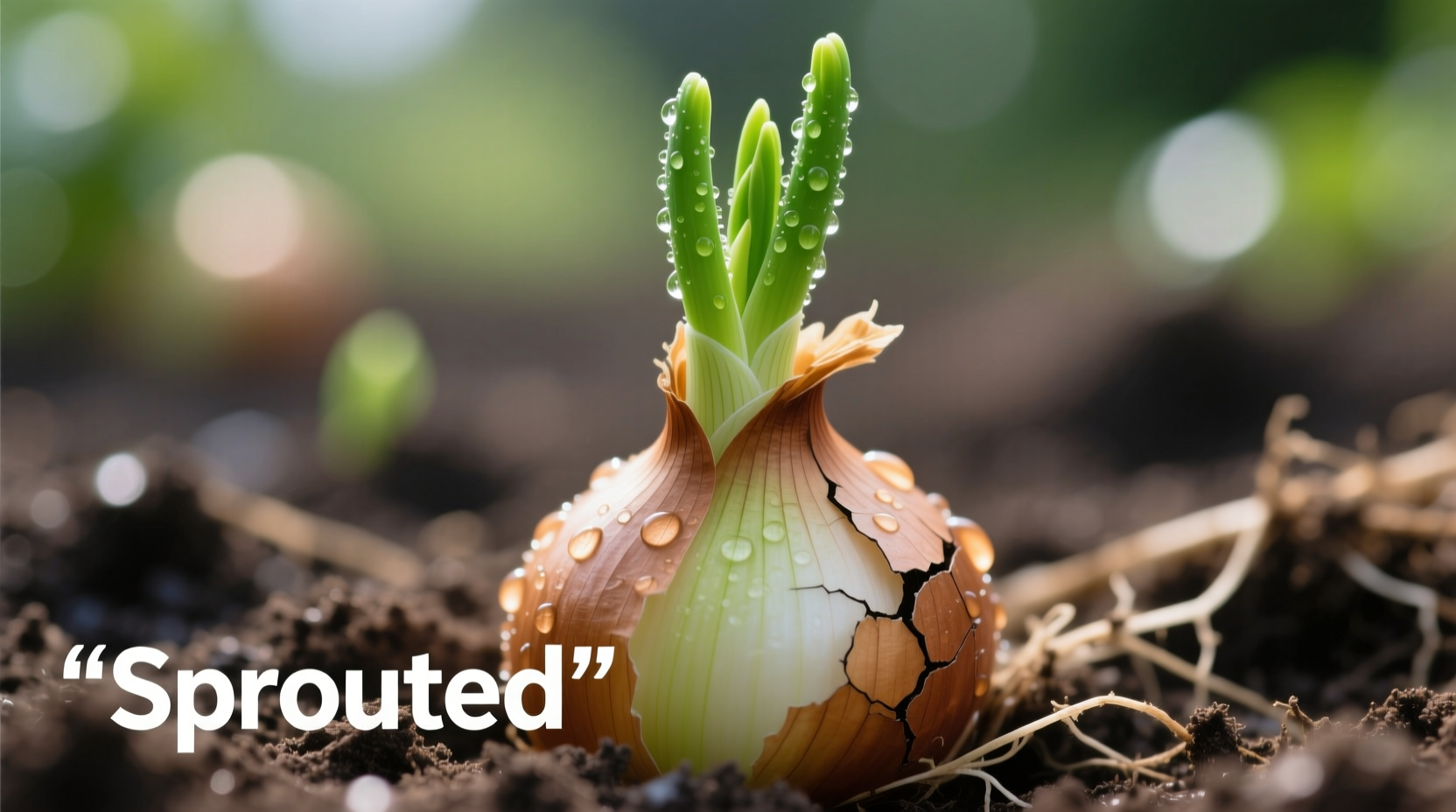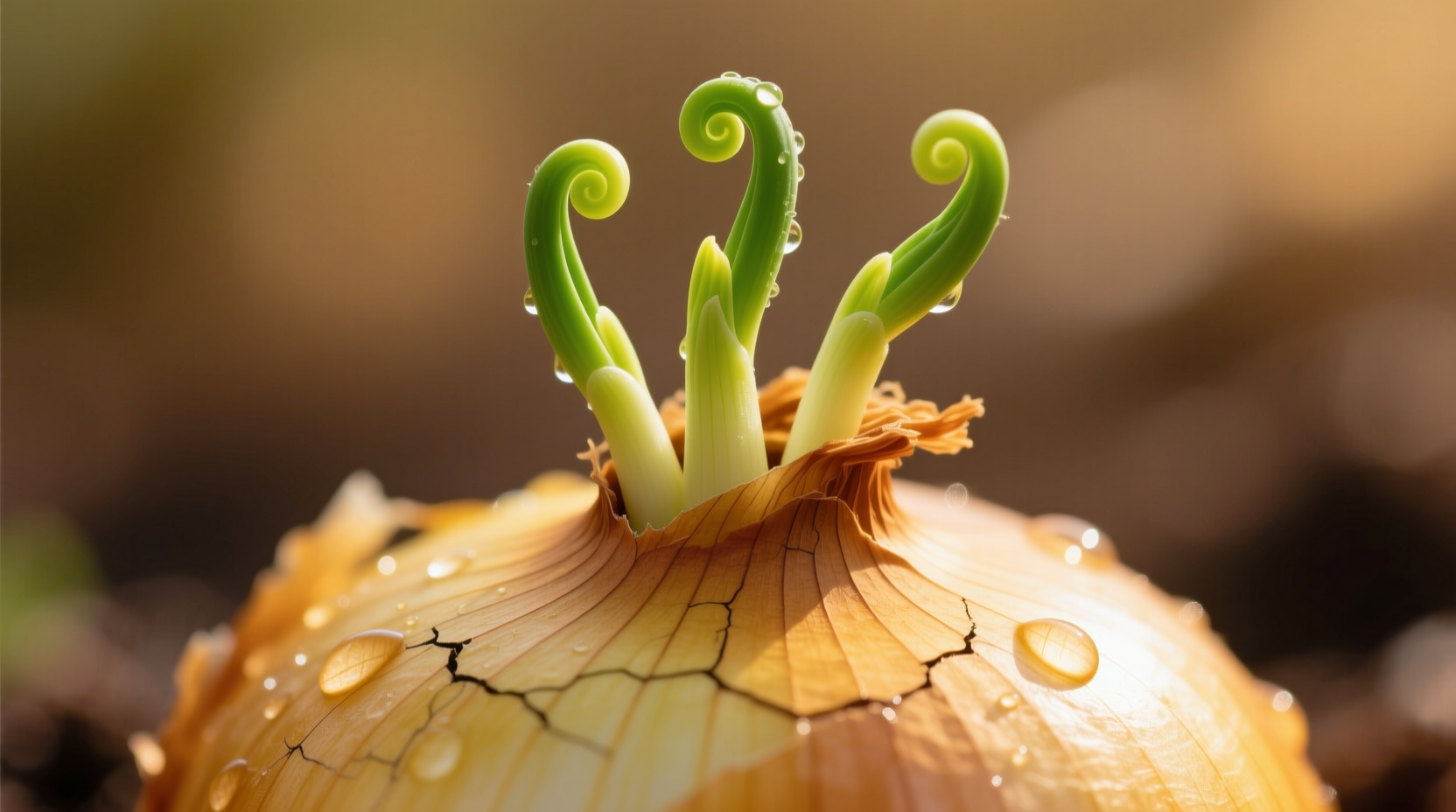Sprouted onions are generally safe to eat if the bulb remains firm and shows no signs of mold or rot. The green sprouts contain higher concentrations of certain nutrients and can be used like scallions, while the white bulb becomes softer and less flavorful but remains edible for several weeks after sprouting begins.
Have you ever opened your pantry to find your onions growing green shoots? You're not alone. Approximately 68% of home cooks encounter sprouted onions each year according to USDA storage surveys. This common kitchen phenomenon doesn't mean your onions have gone bad—it's actually a natural biological process with practical solutions and even culinary benefits.
Why Onions Naturally Sprout: The Science Explained
Onions are living bulbs designed to reproduce. When conditions are right—typically when exposed to warmth and moisture—they initiate their natural growth cycle. This process begins when the onion's internal dormancy period ends, usually 30-60 days after harvest.
| Sprouting Stage | Timeframe | Visible Changes | Edibility Status |
|---|---|---|---|
| Initial sprouting | 1-7 days | Small green shoots appear | Fully edible bulb and sprouts |
| Active growth | 1-3 weeks | Sprouts grow 2-4 inches, bulb softens | Bulb still usable, sprouts flavorful |
| Advanced sprouting | 3-6 weeks | Sprouts 6+ inches, bulb shrivels | Bulb texture compromised, sprouts edible |
| Decomposition | 6+ weeks | Mold, sliminess, foul odor | Discard entire onion |
This sprouting timeline, verified by Cornell University's Food Science Department, shows how onions progress through natural growth stages. Unlike potatoes—which develop dangerous solanine when sprouting—onions remain safe throughout most of this process.
When Sprouted Onions Become Unsafe: Critical Boundaries
While sprouting itself isn't dangerous, certain conditions indicate your onions should be discarded. According to FDA food safety guidelines, throw away sprouted onions if you notice:
- Mold growth (white, green, or black fuzzy patches)
- Excessive softness or mushiness in the bulb
- Slimy texture on any part of the onion
- Foul or sour odor
- Dark spots that penetrate beyond surface level
These warning signs indicate bacterial growth or advanced decomposition that makes the onion unsafe to consume. The University of California Cooperative Extension emphasizes that while sprouts themselves are always safe, compromised bulbs can harbor pathogens.
Maximizing Use of Sprouted Onions: Practical Applications
Don't toss those sprouted onions just yet—they offer culinary opportunities. The green sprouts actually contain higher concentrations of certain nutrients compared to the bulb. Research from the Journal of Agricultural and Food Chemistry shows sprouted onion greens have up to 20% more antioxidants than fresh scallions.

Using the Green Sprouts
Treat the green shoots like chives or scallions:
- Add to omelets and frittatas for fresh onion flavor
- Chop finely for garnishing soups and salads
- Blend into compound butters for grilled meats
- Use in place of chives for potato dishes
Using the White Bulb
While less flavorful than fresh onions, sprouted bulbs still work well in cooked applications:
- Sauté as base for soups and stews
- Roast with other vegetables
- Use in casseroles where texture matters less
- Make onion jam or marmalade
Preventing Premature Sprouting: Storage Solutions
Proper storage dramatically extends onion shelf life. The National Onion Association recommends these evidence-based methods:
Ideal Storage Conditions
- Temperature: 45-55°F (7-13°C)—cooler than room temperature but above refrigerator levels
- Humidity: 65-70%—too dry causes shriveling, too moist encourages sprouting
- Airflow: Essential—store in mesh bags or baskets, never sealed containers
- Light: Complete darkness—exposure to light triggers sprouting
Avoid common storage mistakes that accelerate sprouting:
- Don't store near potatoes (they emit ethylene gas)
- Never refrigerate whole onions (causes moisture buildup)
- Keep away from heat sources like stoves or dishwashers
- Don't wash before storing (adds moisture)
Turning Sprouting into Opportunity: Regrowing Green Onions
Instead of discarding sprouted onions, transform them into a continuous green onion supply. This simple hydroponic method requires no special equipment:
- Cut 1 inch from the root end, keeping roots intact
- Place in shallow dish with ½ inch of water
- Change water every 2-3 days
- Position in bright indirect light
- Harvest new greens when 4-6 inches tall (about 7-10 days)
This regrowth technique, documented by the USDA's National Institute of Food and Agriculture, allows you to harvest fresh green onions for 3-4 cycles before the bulb exhausts its energy reserves. Each harvest stimulates new growth, providing fresh葱 for your kitchen while reducing food waste.
When Sprouting Indicates Quality Issues
While sprouting is natural, premature sprouting can indicate quality problems with your onions. According to agricultural experts at Texas A&M AgriLife Extension, onions that sprout within 2 weeks of purchase likely experienced:
- Improper curing after harvest
- Exposure to temperature fluctuations during transport
- Being harvested before full maturity
These factors compromise storage potential but don't affect immediate safety. When selecting onions at the store, choose firm bulbs with dry, papery skins and no visible green shoots for longest shelf life.
Practical Tips for Managing Sprouted Onions
Implement these professional kitchen-tested strategies:
- Immediate use: Prioritize sprouted onions in your meal planning—they'll last 2-3 weeks after sprouting begins
- Separate components: Store sprouts and bulbs separately—sprouts last 5-7 days refrigerated while bulbs need cool, dry storage
- Freeze for later: Chop and freeze sprouted onion parts you can't use immediately
- Flavor boost: Use sprouted onions in dishes where milder onion flavor is acceptable
- Growth monitoring: Check sprouting onions every 3-4 days to catch them at optimal use stage











 浙公网安备
33010002000092号
浙公网安备
33010002000092号 浙B2-20120091-4
浙B2-20120091-4